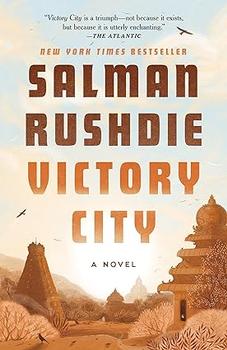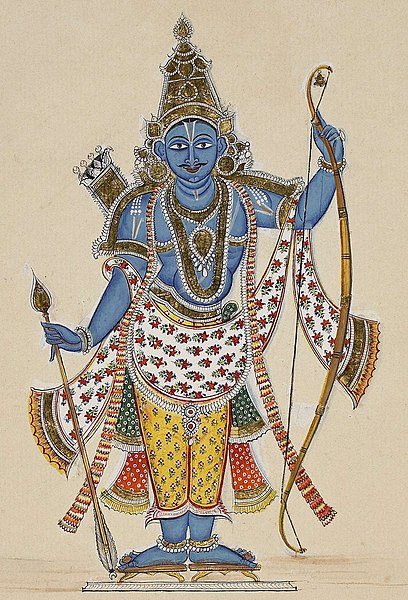Summary | Excerpt | Reviews | Beyond the Book | Read-Alikes | Genres & Themes | Author Bio

A Novel
by Salman RushdieThis article relates to Victory City
 The Ramayana, which translates from Sanskrit as "Rama's Journey," is one of the two great epic poems of India and a foundational text of Hinduism; the other is the Mahabharata, which is longer and means "Great Epic of the Bharata Dynasty." The Ramayana was composed by the poet Valmiki, probably around the 5th century BCE, though sources vary on this. The poem is split into seven parts; the first and last parts are believed to be later additions. Some of the Ramayana is thought to have taken place at or near the capital of the Vijayanagara Empire—the setting of Salman Rushdie's novel Victory City—and the empire's art and architecture were strongly inspired by the poem.
The Ramayana, which translates from Sanskrit as "Rama's Journey," is one of the two great epic poems of India and a foundational text of Hinduism; the other is the Mahabharata, which is longer and means "Great Epic of the Bharata Dynasty." The Ramayana was composed by the poet Valmiki, probably around the 5th century BCE, though sources vary on this. The poem is split into seven parts; the first and last parts are believed to be later additions. Some of the Ramayana is thought to have taken place at or near the capital of the Vijayanagara Empire—the setting of Salman Rushdie's novel Victory City—and the empire's art and architecture were strongly inspired by the poem.
The Ramayana tells the story of Rama, the son of a king who is exiled to the forest for 14 years. There, his wife Sita is kidnapped by a demon king. Rama then asks Lord Hanuman, the chief of monkeys, to help him rescue Sita. Rama, Hanuman and Hanuman's monkey army travel to the island where Sita is trapped, wage war and finally win Sita back and return home; Rama becomes king. Incorporated into the story are ideas about philosophy, ethics and duty.
Rama is considered by many Hindus to be the perfect avatar (incarnation) of the deity Vishnu—and a real historical figure, not just a legend. He's a symbol of virtue and the embodiment of truth and morality—in the words of the Indian mystic Swami Vivekananda, "the ideal son, the ideal husband, and above all, the ideal king." Lord Hanuman, the mighty ape of the Ramayana, is one of the most popular idols in the Hindu pantheon and, according to an article by writer Subhamoy Das, "is worshipped as a symbol of physical strength, perseverance, and devotion."
Unlike the Mahabharata, which is the story of rival groups of cousins who break ethical codes in a battle for the throne, the Ramayana is an example of good prevailing over evil and serves as a source of guidance for moral behavior for millions of people. Arin Kumar Shukla writes in a post for the Times of India Readers' Blog, "if you want to know the dos for a successful life, read Ramayana … if you want to know the don'ts for a successful life, read Mahabharata."
Today, the capital area of the Vijayanagara Empire is called Hampi, and it's a UNESCO World Heritage Site because of its ancient temples and other ruins of the era. The temples at Hampi are decorated with depictions of the stories of Hanuman and Lord Rama. And just a short distance away is Kishkindha, the mythological monkey kingdom where Lord Hanuman was said to have been born.
Painting of Lord Rama with bow and arrow, via The British Museum
Filed under Places, Cultures & Identities
![]() This "beyond the book article" relates to Victory City. It originally ran in April 2023 and has been updated for the
January 2024 paperback edition.
Go to magazine.
This "beyond the book article" relates to Victory City. It originally ran in April 2023 and has been updated for the
January 2024 paperback edition.
Go to magazine.
I like a thin book because it will steady a table...
Click Here to find out who said this, as well as discovering other famous literary quotes!
Your guide toexceptional books
BookBrowse seeks out and recommends the best in contemporary fiction and nonfiction—books that not only engage and entertain but also deepen our understanding of ourselves and the world around us.